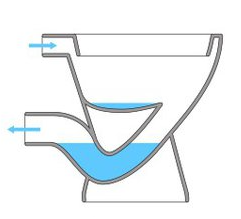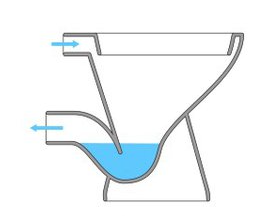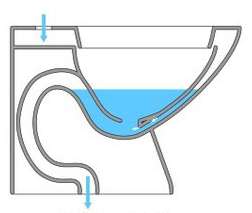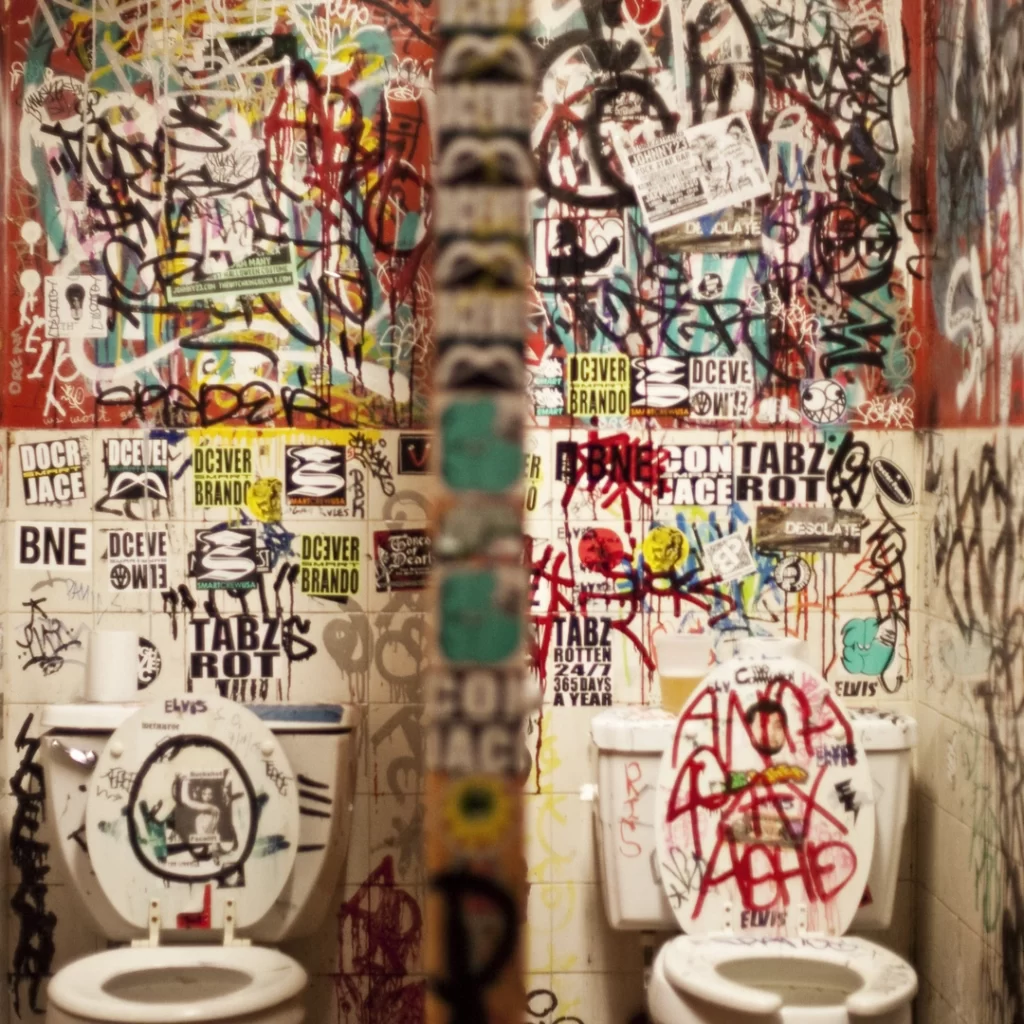
For some, it’s a space for refuge from stress and anxiety. For some, it’s a place for artistic exploration. For some, it is perceived as an arena for vulnerability and self-discovery. For many, it’s a hub for connection and community. Others see it as a battleground for social justice; for some For some, it’s a quiet space for prayer and reflection, a reminder of the body’s connection to the natural world, while some perceive it as a canvas to express their minds freely. It’s a place of tranquillity and relaxation; it’s a space to entertain and enrage, as well as highlight society’s most divisive issues; and for all, it is a place where the person is himself or herself.
And that space is the Toilet.
Toilets have become my greatest passion in recent years. It all started when my friends and I stumbled upon an old, abandoned government toilet complex in Ooty, India, during our Kodappamund channel, cleaning drive. The place was riddled with neglect, emitting foul odours and serving as a breeding ground for mosquitoes, a hideout for criminals, and a dustbin for millions of tourists. We revitalised the dilapidated complex into a vibrant hub of creativity and expression, which we affectionately named “Gallery OneTwo.” This transformed space now serves as a dynamic venue for showcasing the works of both local and international artists throughout the year. Within the white-washed canvas of the transformed complex, I discovered the unassuming throne, revealing its hidden depths – the world of the toilet.”

The toilet is a great place for thinking, reading, and sometimes writing. A toilet is a small space with a door that is shut when a person urinates or defecates, typically consisting of a large bowl connected to a system for flushing away the waste into a sewer. This creates a safe and secure environment for our true animalistic selves. This quiet solitude and momentary confinement remove and isolate you from the clamour and chaos of the outside world, from the distraction, from the demands, from the pressure to perform, from the social facades, from the societal expectations, from the endless to-do list that fades into the background, allowing for a much-needed pause and a moment of peace. In this stillness, you can finally breathe and just be. This temporary disengagement allows minds to shift from the “doing” mode to the “being” mode, stimulating deep introspection, contemplation, and self-reflection. Removed from hierarchies and status symbols, the toilet becomes an egalitarian space. This level playing field fosters a free flow of thought, potentially leading to groundbreaking solutions.
The tiny space creates a state of sensory deprivation. With limited visual and auditory senses, apart from the sounds of running water and the starkness of the porcelain, the mind compensates by drawing from its inner resources. Imagination takes centre stage, weaving connections and generating creative ideas and breakthroughs. This very routine can be surprisingly beneficial for creative thought. The repetitive nature allows the mind to settle into a comfortable rhythm, freeing up subconscious processing power.
When I searched for information, I came across interesting facts about toilets and their history. Martin Luther said himself that he made his reformatory discovery in cloaca [Latin for “in the sewer”] and wrote the “95 Theses” that launched the Protestant Reformation sitting in the latrine. In India, Mahatma Gandhi saw sanitation as a road to social empowerment. He saw the creation of toilets as a means to abolish untouchability, as sanitation work was something that society thought should be done by low-caste people. He also believed that cleaning a toilet would strip the person of any residual ego and make them humble enough to be able to recognize truth and be prepared to serve the weakest and the poorest.
In exploring the historical significance of toilets, I learn not only their utilitarian function but also their profound cultural and societal impact. With this historical backdrop in mind, I delve deeper into the architectural designs of toilets, understanding how they reflect not just practical considerations but also deeper ideological perceptions.
The architecture and behaviours around toilets bear not only purely utilitarian terms, but each design involves a certain ideological perception of how the person relates to excrement. Slavoj Žižek, a Slovenian continental philosopher, illuminates the architectural designs of toilets to express three different existential attitudes: reflective thoroughness (German), revolutionary hastiness (French), and utilitarian pragmatism (English). In a traditional German toilet, the hole into which waste disappears after flushing is right at the front, so that waste is first laid out for us to sniff and inspect for traces of illness. In the typical French toilet, on the contrary, the hole is at the back, i.e., waste is supposed to disappear as quickly as possible. Finally, the American (Anglo-Saxon) toilet presents a synthesis, a mediation between these opposites: the toilet basin is full of water, so that waste floats in it, visible but not to be inspected.



I am saying that the attitudes towards waste in Indian and Turkish toilets reflect pragmatism and spirituality. In these cultures, the squatting position, unlike the Western style, encourages a more mindful approach to bodily functions, aligning with spiritual practices and emphasizing practicality.
The toilet cubicles around the world are completely adorned—from the doors to the walls to the ceiling—with latrinalia. Bold statements advocating for social change intersect with raw confessions about personal struggles, fantasy escapism, and declarations of love, expressed with illegible scribbles in every hue imaginable. These spaces serve as more than just facilities; they’re a marketplace of ideas, a platform for advertising services, and an experimental ground for expressing fantasies. Toilet graffiti becomes a canvas for diverse forms of expression and communication.

The ‘Toilet’ is a remarkable technological extension of our digestive system, comparable to an external organ designed to manage bodily waste. Serving as an extension of the large intestine, it functions as a sophisticated machine that collects and expels faeces collected from our bodies. The intricate plumbing network, resembling the convoluted pathways of our intestines, transports waste through a system of pipes and sewers that run beneath our cities, towns, and villages and mixes with the universal system.
This system not only facilitates the disposal of bodily waste but also serves as a conduit for various forms of information. Much like the World Wide Web facilitates the exchange of digital data, the modern sewerage system enables the flow of physical waste, carrying vital information about public health and sanitation. In essence, it embodies a remarkable feat of engineering, enabling the efficient management of waste on a societal scale.
This small, modest cubicle, which is in the corner of your house, in your office, or in a public space, is a reminder of the connection you have with the organic world and a reminder of our inevitable decay and decommission. The toilet reminds us of our mortality and our humanness, probably more so than any other form of technology in the world.
Anecdotes
In popular anecdotes, it is believed that Elvis Presley died while wearing a diaper and enjoying one of his grilled peanut butter, banana, honey, and bacon sandwiches. Lenny Bruce, a famed stand-up comic whose career flourished in the mid-20th century, was found dead on the toilet bowl. A 3rd-century Roman emperor, Elagabalus, was best known for his hedonistic ways; he hid in a bathroom before being murdered. A king of England in the late 10th and early 11th centuries was in the privy when he passed. Likewise, many rich and famous people died in toilets, from mediaeval monarchs to early Christian theologians, legendary architects to groundbreaking comedians; tonnes of tragic historical deaths occurred on the commode.
Toilet space also manifests behaviour that is unique to individuals. People have the strangest habits when it comes to their toilets, like Madonna allegedly insisting hers has a new seat fitted every day after having the sealed item inspected by her staff, Megan Fox doesn’t flush the toilet after she is done with her business, or Jeetendra, a famous Indian actor, eats a papaya while sitting in the toilet.
Toilets are an important metaphor in cinema, especially in crime and horror movies. Overflowing tubs, phantasmic blood gurgling up from toilets, axe murderers behind the shower curtain, bodies sucked into drains, gunning down in the toilet and bathroom, corpses rising from the bathtubs, and…it goes on.



